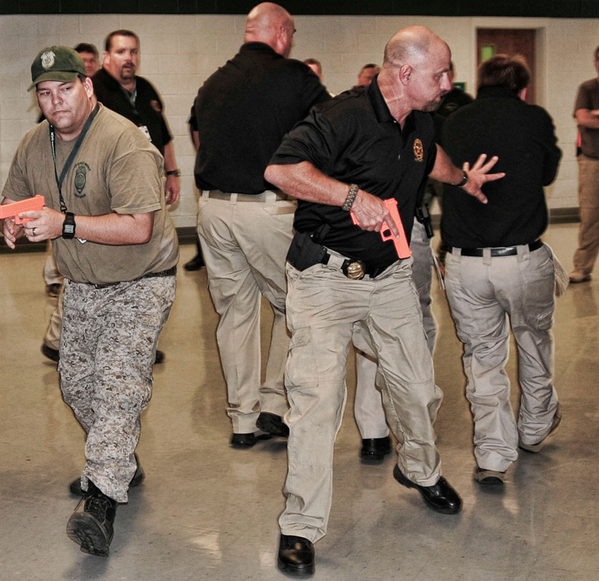WASHINGTON – Imagine you’re a police officer in a small town in Illinois. During your routine afternoon patrol, you get the call: a student has opened fire at the elementary school.
You’ll be the first responder, and as you speed to the scene you think about what you’ve learned about entering an “active shooter” situation alone, disarming the gunman and providing early treatment for the wounded.
You’re lucky you’ve had active shooter situation training – not every officer in rural areas has been so lucky.
Last month, Attorney General Eric Holder urged Congress to approve millions of dollars in federal spending for active shooter situation training, which teaches officers how to handle situations like those at Fort Hood and Sandy Hook Elementary. But even when the money is approved, many local law enforcement officers won’t be able to participate.
The training, which is administered primarily through the Advanced Law Enforcement Rapid Response Training Center (ALERRT) in San Marcos, Texas, is free, but small law enforcement agencies struggle with financial and logistical obstacles when pulling officers from the field for training sessions.
“[The departments] can’t afford to take their people off the street, to get other officers to backfill their shifts,” said Yousry Zakhary, president of the International Association of Chiefs of Police. “It becomes a financial burden.”
This is especially challenging for departments with about 10 officers, according to Alexander Weiss, adjunct professor of criminal justice at Michigan State University. And according to Department of Justice data released in 2011, that’s a lot of police departments across the United States. About half of all police agencies employ fewer than 10 full-time officers, the report said.
Curt Barker, police chief in rural Macomb, Ill., said that one practical way for a small town department to get training is to send an officer to a “train the trainer” course, where police learn the material and also how to teach their colleagues.
Getting a “train the trainer” course, which ALERRT also offers, can be a challenge, however.
On Wednesday, the Longview Police Department will begin an active shooter “train the trainer” course in nearby Kilgore, Texas.
“It’s been a long process,” said Anthony Boone, lieutenant at the Longview department.
Boone said that getting their officers into regular courses hasn’t been a problem, but getting a “train the trainer” class in active shooter situations took about a year to pull off.
“Classes are hard to get because of it being such a hot topic right now,” Boone said.
Diana Hendricks, communications director at ALERRT, said the program is doing its best to help rural law enforcement get the training, both by teaching as many “train the trainer” classes as possible and trying to maximize the reach of their regular classes.
“We can’t ever forget those small agencies on our request list,” Hendricks said. “We want more than just dots on the map when we look at training – we want to be sure if we go to Utah, for example, we’re taking it to a place where they can spread it beyond their local agency.”
Hendricks said that ALERRT has a backlog of about 300 requests for training this year, and the program is counting on the federal money sought by Holder to train thousands of law enforcement officers this summer.
Even though it’s financially and logistically difficult, many small police departments will try to participate in active shooter training, Weiss said. Local law enforcement officers appreciate that they could find themselves in the situation of the Newtown, Conn., police department.
The Newtown department, with its staff of about 50, was the first to arrive at the Sandy Hook Elementary School shooting in 2012, about three minutes after the first 911 call was made, according the Connecticut Police Chiefs Association official report.
“That local agency is going to be the first to go in,” Weiss said. “In that case, they’d better know what they’re doing.”

